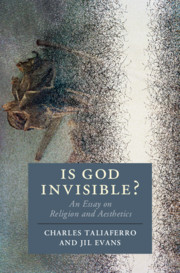Book contents
- Is God Invisible?
- Cambridge Studies in Religion, Philosophy, and Society
- Is God Invisible?
- Copyright page
- Contents
- Figures
- Web Figures
- Acknowledgments
- Introduction
- 1 Aesthetic Personalism
- 2 Is God Invisible?
- 3 The Gates of Perception
- 4 The Perception of Gates
- 5 The Beautiful Gate
- 6 Revealing and Concealing
- 7 Public Perception of Religious and Art Objects
- 8 A Personal Guide to the Aesthetic Experience of Works of Art
- Epilogue
- Index
3 - The Gates of Perception
Published online by Cambridge University Press: 30 March 2021
- Is God Invisible?
- Cambridge Studies in Religion, Philosophy, and Society
- Is God Invisible?
- Copyright page
- Contents
- Figures
- Web Figures
- Acknowledgments
- Introduction
- 1 Aesthetic Personalism
- 2 Is God Invisible?
- 3 The Gates of Perception
- 4 The Perception of Gates
- 5 The Beautiful Gate
- 6 Revealing and Concealing
- 7 Public Perception of Religious and Art Objects
- 8 A Personal Guide to the Aesthetic Experience of Works of Art
- Epilogue
- Index
Summary
The Bhagavad Gita is part of the Hindu epic Mahabharata. The scripture narrates a dialogue between the warrior prince Arjuna and his charioteer Krishna, who is an avatar (a kind of incarnation or manifestation) of Vishnu, the cosmic force of goodness, the inner Lord who lives in the hearts of all beings. Their dialogue takes place prior to a monumental battle. Arjuna is downcast, despairing over the monstrosity of the imminent mass killings of family, friends, and former teachers, who are in the opposing army. The dialogue has many layers and teachings about choices, our duties, actions, intentions, the presence of good and evil, and reincarnation. It culminates in the revelation of the divine. Here is a section from the chapter Divine Splendor.
- Type
- Chapter
- Information
- Is God Invisible?An Essay on Religion and Aesthetics, pp. 40 - 62Publisher: Cambridge University PressPrint publication year: 2021

